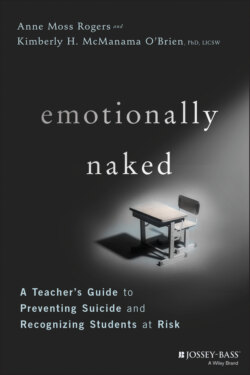Читать книгу Emotionally Naked - Anne Moss Rogers - Страница 18
Chapter 1 Why Are We Seeing More Mental Health Problems with Students?
Оглавление“In order to achieve, you have to put wellness first.”
Jennifer Hamilton (She/Her/Hers), School Psychologist, Director of Psychology andCounseling at Noble and Greenough, Independent School, Dedham, Massachusetts
Mental health includes our emotional, psychological, and social well-being. It affects how we think, feel, and act and drives how we handle stress, relate to others, and make choices.1 This can be impacted by the home and social environment, economic status including homelessness and food instability, early childhood adversity or trauma, physical health, and a family history of mental health diagnoses and suicide. Mental health concerns, such as depression, anxiety disorders, self-harm, post-traumatic stress disorders, and substance use disorders, significantly impact one's daily functioning, and those are the signs that educators need to look out for.
Many psychiatric disorders have their onset at adolescence. So right at the phase when their brains are still maturing and hormones are driving behavior, teenagers can develop a mental illness, making adolescence that much more challenging. Mental illness often makes teens more susceptible to suicide risk, and family history, medical history, and social stressors like trauma, grief, transitions, and relationship disruption can add to that vulnerability.
